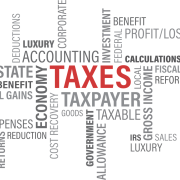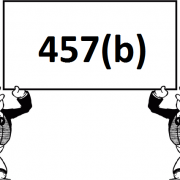 Print Friendly Version
Print Friendly Version
A tale of two 457(b) plans
“Are there differences between 457(b) plans for tax-exempt entities and governmental entities and, if so, what are the differences?”
ERISA consultants at the Retirement Learning Center (RLC) Resource Desk regularly receive calls from financial advisors on a broad array of technical topics related to IRAs, qualified retirement plans and other types of retirement savings and income plans, including nonqualified plans, stock options, and Social Security and Medicare. We bring Case of the Week to you to highlight the most relevant topics affecting your business.
A recent call with a financial advisor from Wisconsin is representative of a common inquiry related to 457 plans.
Highlights of the Discussion
A plan established under IRC §457(b) allows employees of eligible sponsoring employers to set aside a portion of their income on a tax-deferred basis for receipt and taxation at a later date (similar to a 401(k) or 403(b) plan). You may sometimes hear them referred to as “eligible deferred compensation plans” because they follow the rules of subsection (b) under IRC §457 as opposed to “ineligible” plans as defined under IRC §457(f).
Two types of employers can establish 457(b) plans: 1) state or local governmental entities; or 2) tax-exempt organizations pursuant to IRC §501. While there are some similarities between a governmental 457(b) plan and a tax-exempt 457(b) plan, there are some very important differences, including, but not limited to, funded status, plan loans, catch-up contributions, when amounts are taxable, and eligibility for roll over to another plan.
The IRS has compiled this handy comparison chart (recreated below) to help those who work with or participate in 457(b) plans understand in more detail the similarities and differences between plan operations for the two types of employers that sponsor them.
| Tax-Exempt 457(b) plan | Governmental 457(b) plan | |
| Eligible employer | IRC §501 tax-exempt employer that isn’t a state or local government (or political subdivision, instrumentality, agency) | State or local government or political subdivision or instrumentality or agency |
| Written plan document required? | Yes | Yes |
| Eligible participants | Limited to select group of management or highly compensated employees | Employees or independent contractors who perform services for the employer may participate |
| Coverage; nondiscrimination testing | No | No |
| Salary reduction contributions (employee elective deferrals) permitted? | Yes | Yes |
| Ability to designate all or portion of salary reduction contribution as a Roth contribution | No | Yes |
| Employer contributions permitted? | Yes | Yes |
| Salary reduction contribution limit, in general | Lesser of applicable dollar limit ($19,000 in 2019) or 100% of participant’s includible compensation | Lesser of applicable dollar limit ($19,000 in 2019) or 100% of participant’s includible compensation |
| Increased salary reduction limit for final 3 years before attaining normal retirement age | Lesser of:
|
Lesser of:
Note: Can’t use the increased limit if using age 50 catch up contributions. Therefore, in years when an employee is eligible to take advantage of both, the employee can use the higher of the two increases to the limit. |
| Salary reduction contribution limits- Age 50 catch-up contributions (for individuals who are age 50 or over at the end of the taxable year) | Not permitted | Salary reduction dollar limit increased by $6,000 (up to a total of $25,000 in 2019)
Note: See above. Can’t use in years that a participant is taking advantage of the increased limit during the final 3 years before attaining normal retirement age. |
| Timing of election to make salary reduction contribution | Before the first day of the month in which the compensation is paid or made available | Before the first day of the month in which the compensation is paid or made available |
| Total contribution limits (both salary reduction and employer contributions) | Same as limit for salary reduction contributions. So, any employer contribution limits the amount of salary reduction contribution an employee can make (and vice versa) | Same as limit for salary reduction contributions. So, any employer contribution limits the amount of salary reduction contribution an employee can make (and vice versa) |
| Correcting excess elective deferrals | Distribute excess (plus allocable income) by April 15 following the close of the taxable year of excess deferral | Distribute excess (plus allocable income) as soon as administratively practicable after the plan determines that the amount is an excess deferral |
| Contributions to trust? | No | Yes |
| Participant loans permitted? | No | Yes |
| Hardship distributions permitted? | Yes, if both: 1. the distribution is required as a result of an unforeseeable emergency, for example, illness, accident, natural disaster, other extraordinary and unforeseeable circumstances arising from events beyond the participant’s (or beneficiary’s) control 2. the participant exhausted other sources of financing and the amount distributed is necessary to satisfy the emergency need (and tax liability arising from distribution) |
Yes, if both: 1. the distribution is required as a result of an unforeseeable emergency, for example, illness, accident, natural disaster, other extraordinary and unforeseeable circumstances arising from events beyond the participant’s (or beneficiary’s) control and 2. the participant exhausted other sources of financing and the amount distributed is necessary to satisfy the emergency need (and tax liability arising from distribution) |
| Automatic Enrollment permitted? | No | Yes |
| Taxation | Earlier of when made available or distribution | Distribution |
| Distributable events |
|
|
| Required minimum distributions under Internal Revenue Code Section 401(a)(9) | Yes | Yes |
| Rollovers to other eligible retirement plans (401(k), 403(b), governmental 457(b), IRAs) | No | Yes |
| Availability of statutory period to correct plan for failure to meet applicable requirements | No | Yes, until 1st day of the plan year beginning more than 180 days after notification by the IRS |
| Availability of IRS correction programs including the Employee Plans Compliance Resolution System (EPCRS) under Revenue Procedure 2019-19 | Generally, not available to correct failures for an unfunded plan benefiting selected management or highly compensated employees. May consider closing agreement proposals when nonhighly compensated are erroneously impacted. | Can apply for a closing agreement with a proposal to correct failures. Proposal is evaluated according to EPCRS standards. |
Conclusion
While there are some similarities between governmental 457(b) plans and a tax-exempt 457(b) plans, there are some very important differences of which to be aware.










